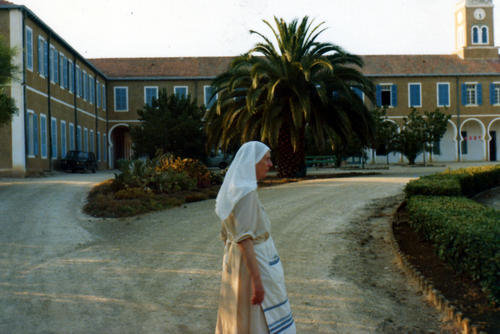
Tunisia has two seasons and two faces. The year is divided into months, these are grouped into seasons which, it seems, are four (for how long?) In Tunisia, and for a long time already, we do with two great seasons: the one The coast and the deep country. Two categories that are unique to us and which, in their alternation, make us flock to the beaches or flow back inland. In general, from October to the beginning of May, one appreciates the agrarian nature in all its states; Between May and September, we prefer the soft and temperate climate of the coastal ribbon. This is it. By Tahar Ayachi
Inland Tunisia offers immense tourist, natural and cultural resources, exploitable according to the state of the weather, which is nowadays very predictable enough in advance, which allows the anticipation of Planning of outputs. In the early days of spring, it is recommended to frequent areas less accessible in rainy periods, due to the slippery nature of the terrain and / or the flooding of the wadis. This is the case of our destination, this time, and that will lead us in the delegation of Thibar in the governorate of Béja.
It is a singular excursion which, in a pocket handkerchief, will present to us from Tunisia two very contrasted faces, although facing each other over a valley traversed by a stream at a distance of only seven kilometers: Thibar And Djebba. Thibar, the capital of the delegation, is 30 km from Béja, on the slip linking it to Téboursouk. A very beautiful route, first in this feast of valley of the Mejerdah and then on the wooded relief of Dorsale by a sinuous route which, according to detours, offers very beautiful perspectives (even more beautiful when it is traveled in The opposite direction).
Thibar: a piece of Europe in Tunisia.
Thibar, perched at more than 500 m, is a 100% colonial creation. It was founded by the Catholic religious brotherhood of the White Fathers towards the end of the 19th century. They built a seminary there, but also a technical and agricultural educational establishment and installations to turn an immense domain which spreads from the wooded heights by their care on the slopes planted of vine which gave the wines of Thibar and on The plain of the wadi of the same name. There, they also developed the famous thibarine, a liqueur made from dates and other local ingredients (they failed to pass on the secrets of a great mass wine and a sacred sparkling wine called Médaillon Vert, today And has created the bovine and ovine breeds also known as thibar, which are particularly adapted to the Tunisian climate and needs.
As in many other places of the same kind, the town planning of this locality, originally purely provincial in France, was altered by the subsequent additions incongruous and prejudicial to the harmony of the locality. Fortunately, there is a clear tendency in the existing building, especially in the administrative buildings, to return to the original cachet. In any case, most of the premises, especially the beautiful seminary, now a school of agriculture, are still more or less well preserved. Do not hesitate to force the doors a little to be able, even remotely, to admire this amazing setting in the middle of the Tunisian countryside. Obviously, this will not give you access to the interior of the premises or to the administration of the estate where a pure masterpiece of cabinetmaking awaits the privileged visitor who can access the former meeting room of the religious direction , Nor yet to the superb underground cellars of the cellar. Try always to see the maximum, preferably in the company of an improvised local guide who will guide you (do not forget the gesture that maintains friendship, especially in less well-off places)
Once you have finished your visit to Thibar, slip to the bottom of the valley. Again, you have to be accompanied to arrive, about a kilometer below the archaeological site of Thibari which is incrusted in the heart of the former cereal fields of the White Fathers. The site adjoins the water of a small dam on the river Thibar whose banks offer bucolic paintings of infinite charm. The archaeological site was only very briefly excavated. It is spread over several hectares of wild grass and is dotted with vestiges that are not without interest: a section of aqueduct, cisterns and granaries, remains of villas, church and even a basilica Byzantine period. Nothing very spectacular but a lot of pleasure, especially for a picnic break.
The Hanging Gardens of Djebba.
We take the road in the axis that brought us from Thibar and we go towards Djebba inlaid in the relief that faces the capital and rises in wall to an altitude of nearly 1,000 m at the summit jebel Gorraâ. It is to say that if one undertakes a beautiful climb by a road which, at first, winds lazily in the hollow of the valley then starts to the assault of the mountain flank, twisting, twisting in very tight laces which Places, overlook the void.
Along the way, the first “monuments” of Thijibba Bure (the ancient name of Djebba that some people, and quite wrongly, pronounced “Jebba”) will have been encountered: these are the old mineral deposits of galena and scale , Already exploited in Roman times and put back into service during the colonial period, during which date the installations visible on the side of mountain and which have been abandoned for several decades. At the approach of the locality, the road divides into two branches to lead by two different entrances but which meet at the foot of Mount Gorraa, at the top of the village.
Djebba is characterized by the dispersal of the habitat that is scattered among the luxuriant vegetation of the parcels hanging on the mountainside. In the colonial era, a primary school was set up very early here and it is this one that is first encountered when entering the municipal perimeter, as well as some modest premises of European style. This set constitutes the nucleus of a locality in the making. However, we must not conclude that this way of life has always prevailed here. The Dachra, dominating the plots from the top of a platform at the foot of the Gorraâ, is the heiress of Thijibba Bure whose strategic location it inherited … and a lot of building materials that enter the traditional building, today practically Deserted, except the venerable little mosque, still in service.
The plots, genuine hanging gardens, are watered by multiple springs that flow year-round. The irrigation system is carried out in the manner of the Jérid, that is to say that it passes from one plot to the other where diversions allow the watering of squares planted with fruit trees, fig trees To the national reputation and producing in abundance the famous figs zîdî twice a year, in June and September, as well as olive trees with very organic fruits and giving one of the best oils of Tunisia that German importers recover Almost entirely. Market gardening occupies the remaining areas.
The eastern and southern flanks of the Gorraa are hollowed out by several natural cavities. The largest, a true open-air cathedral, was baptized by the White Fathers Our Lady of the Gorra. They had set up a chapel dedicated to the Virgin, a statue of which, from the top of a niche at the top of the wall, watched over the faithful who came here on pilgrimage during ceremonies celebrated by the religious, especially to celebrate the Assumption (August 15th). In 1990, the statue was the object of an attempted theft organized by Italian smugglers. At the moment of being raised from the cave, the rope broke and the statue fell, breaking into several pieces that the villagers preserve in the hope of an improbable restoration (the cast iron is not weldable) , Hoping even to be able to put it one day in its niche! For some years, this cavern has been converted into a cultural space hosting the local summer festival. And the entire perimeter has been converted into a natural park, classified nationally in recent years. An access was made to drive on the platform of the Gorraa from where the view embraces a sumptuous scenery as far as the valley of the Mejerdah.
In the southern flank of this same mountain (visible from the slipway that circles the village by the direction opposite to that of the arrival), in one of the many natural excavations, at an indeterminate time, was built the castle of Seven Dormants: a cave closed by a wall and attached by the popular local tradition to the myth of the Seven Sleepers which decidedly give the ubiquity since, in Tunisia alone, one finds the cavern near Tozeur, in the vicinity of Chénini de Tataouine as well as the side of Gabès and even … Tunis! This, not to mention the Seven Sleepers of Ephesus (in Turkey) or those whose worship is celebrated in Brittany (France).
Needless to say, in this square of barely ten kilometers of side, one can spend a delicious spring day in a profusion of scenery and strong sensations. And that we can return to it without having exhausted all the resources that can offer the excursions in the neighborhood and that can lead from surprise to surprise (we will return). But we must not forget to provide ourselves in everything (except the water, to delicious Djebba when leaving the source). There is no supermarket, not even a convenience store. Thibar’s only gargote is not frightening and hardly able to find where to buy even a tabouna.




{mainvote}


 َAbonnez-vous
َAbonnez-vous

